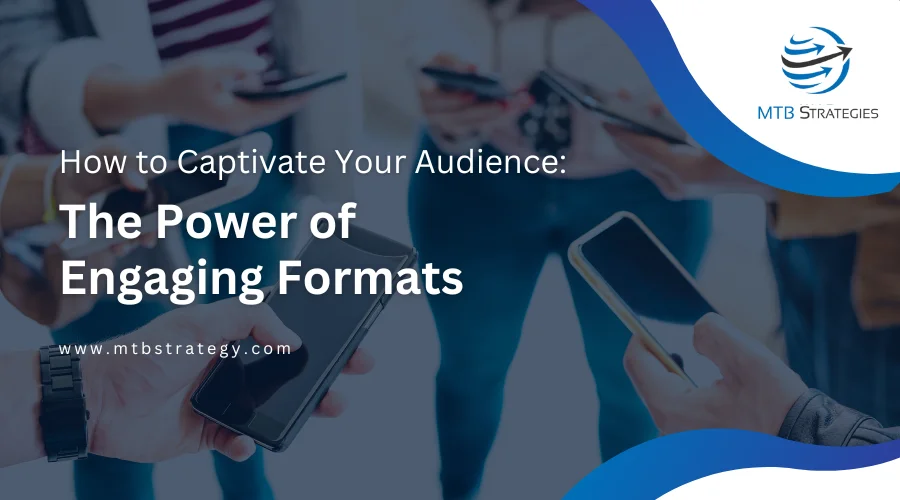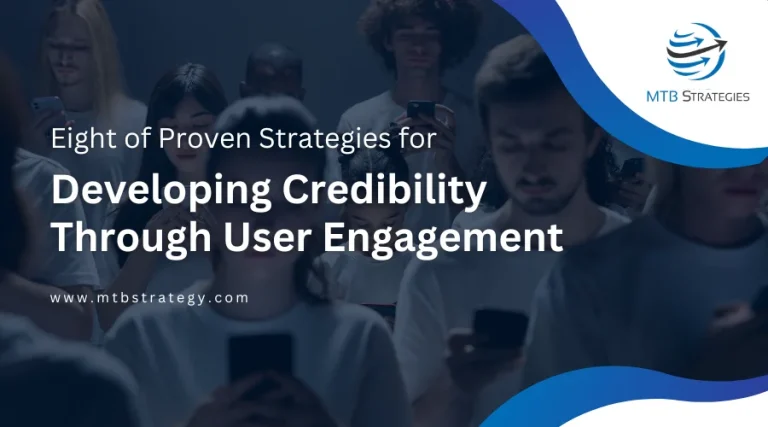In the fast-changing world of making stuff online, one significant fact stands out: you’ve got to grab and keep people’s attention. Every day, a ton of information hits people, so creators need to try new ways to stand out and connect with their audience. In this talk, we’ll explore different ways to make content that grabs people’s attention in a world of choices.
Visit https://www.mtbstrategy.com/ for more details.
What is a Content Experiment?
A content experiment is like a carefully planned test to determine what content works best for your audience. Its main goal is to find out what your audience likes the most. You do this by creating different types of content and seeing how people react to them.
Then, you measure how much people interact with the content, how many people click on it, and how many people act after seeing it. By doing these experiments, content creators can learn a lot about what their audience prefers and make their content even better so that they can connect with more people.
The Most Engaging Content Formats in 2025
In today’s fast-moving digital landscape, capturing and holding attention is more challenging than ever. With audiences bombarded by endless content, brands and creators must go beyond static posts and embrace dynamic, interactive, and immersive formats. Here are the most engaging content types in 2025:
1. Blog Posts with a Fresh Approach
Well-crafted blog posts remain a cornerstone of digital content, but the key to engagement in 2025 is depth, authenticity, and interactivity. Successful blogs go beyond plain text by incorporating:
- Storytelling and real-world examples to create an emotional connection.
- Data visualizations and embedded media (videos, GIFs, or interactive elements) to enhance comprehension.
- Conversational AI integration for personalized reading experiences and Q&A engagement.
2. Video Content: Short, Snackable & Long-Form
Video continues to dominate, but the format has evolved:
- Short-form videos (15-60 seconds) drive engagement on platforms like TikTok, Instagram Reels, and YouTube Shorts.
- Long-form storytelling and educational videos build authority and audience loyalty.
- Interactive and shoppable videos allow viewers to engage, click, and purchase directly from the content.
3. Interactive Infographics & Data Visuals
Infographics are still highly shareable, but in 2025, the most engaging ones are:
- Dynamic and scroll-triggered, adapting as the user interacts.
- AI-generated and real-time updated, ensuring fresh, data-driven insights.
- Clickable or quiz-based, transforming static visuals into an immersive learning experience.
4. Podcasts & Audio Experiences
With the rise of on-the-go content consumption, podcasts continue to grow in popularity. In 2025, successful podcasts feature:
- Interactive Q&A formats, where listeners can send in voice notes or vote on discussion topics.
- Transmedia storytelling, combining audio with companion videos, blogs, or live events.
- AI-personalized recommendations, tailoring episodes based on listening habits.
5. AI-Driven & Immersive Content (AR & VR)
The future is immersive. In 2025, cutting-edge brands are using:
- Augmented Reality (AR) filters and experiences, allowing users to engage with products virtually.
- Virtual Reality (VR) storytelling, creating deeper emotional connections.
- AI-powered interactive content, where users can chat with AI-driven characters or influencers.
By embracing these content formats, creators and businesses can maximize engagement, cater to evolving audience preferences, and stay ahead in an ever-changing digital world.
Experiment with Different Content Formats
Adding different content keeps your audience interested and helps you reach people who like to learn differently. When you try other formats, you can see what your audience likes best and adjust your content plan to match.
You can write an excellent blog post to start conversations, make an awesome infographic that teaches and entertains or create a fun podcast that people love to listen to. There are so many options! Just be creative and try new things to keep your audience interested and returning for more.
9 Types of Interactive Content and Engaging Examples
- Quizzes: You may have much fun collecting valuable data with interactive quizzes. For example, Buzzfeed’s personality quizzes are viral and highly shareable.
- Polls and Surveys: Encourage audience participation by incorporating polls and surveys into your content. Platforms like Instagram and Twitter make gathering feedback and insights from your followers easy.
- Interactive Maps: For businesses with a geographical component, interactive maps can provide valuable information in an engaging format. Airbnb’s neighborhood guides are an excellent example of this.
- Calculators: From mortgage calculators to fitness trackers, interactive calculators provide personalized value to users while keeping them engaged on your website.
- Interactive eBooks: Transform traditional eBooks into interactive experiences using multimedia components like films, animations, and clickable links.
- Interactive Infographics: Take static infographics to the next level by making them interactive. This allows users to explore data in a more engaging and immersive way.
- Interactive Webinars: Host interactive webinars where participants can ask questions, participate in polls, and engage in real-time discussions.
- Virtual Tours: For businesses in the travel and hospitality industry, virtual tours offer a glimpse into their offerings and create a sense of immersion for prospective customers.
- Augmented Reality (AR) Experiences: Leveraging AR technology, brands can create interactive experiences that let customers see things in their natural settings before purchasing.
In a world of material, being unique requires more than great storytelling—it requires strategic experimentation with engaging formats. By diversifying your content and incorporating interactive elements, you can capture and maintain audience attention while catering to diverse preferences. So, don’t be afraid to get creative and explore new ways to captivate your audience. After all, the content experimentation journey is rewarding and essential for staying ahead in the digital age.






